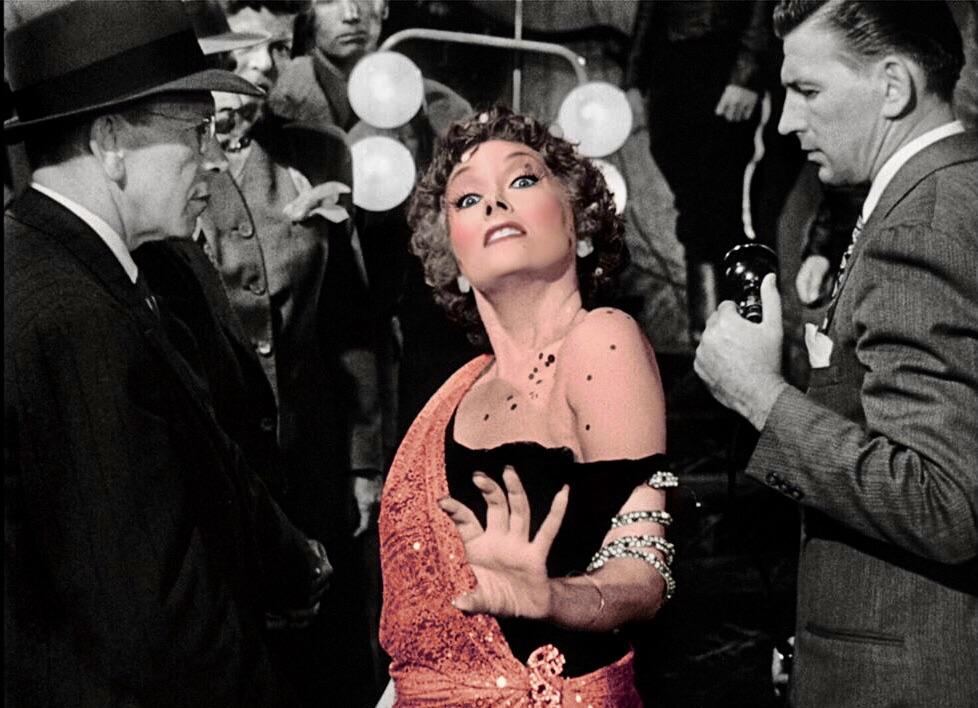
- “Is Bob on the call? Will someone PLEASE e-mail Bob?
- “Everyone, everyone, PLEASE mute your #$%^& line!”
- “THERE’S there’s, AN an, ECHO, Echo, echo, ech….”
- “How do we share our screen again? Wait I see it. No, that’s not it.”
It’s 2020; one year AFTER the events of the film Blade Runner. Still no flying cars. No androids. And apparently no lawyers capable of carrying off a flawless video conference.
COVID-19 is pushing everyone to videoconferencing. I’ve long used it to webcast and teach law classes, so thought I’d share a few tips to exorcise the gremlins.
SOUND: While the microphone on your laptop may suffice, a quality microphone makes a big difference in sound quality, especially amidst ambient noise. My buddy Ernie “the Attorney” Svenson has a quality microphone and scissors-arm stand in his office/studio. It’s great, and you could probably rig up something similar for under a hundred dollars. For my money, I adore my $50 Blue Snowball microphone and stand. Great pickup and timbre. It plugs into any USB port (no fumbling for a mike jack) and just works every time. Bulletproof.
LIGHTING: There’s a reason cinematographers spend so much time fussing over lighting. It’s important because much of what we “say” in teleconferences is conveyed by facial expression and small gestures. Overhead lighting casts ghoulish shadows. The shadows caused by back lighting (e.g., a window behind you) make everyone look like they’re in witness protection. Your face needs to be brightly and evenly lit, best accomplished by diffused and/or reflected light.
I’ve struggled to rig up suitable webcast lighting. I even had studio lights on tripods flanking my desk and a big overhead hair light on a boom balanced by a sandbag. Not quite law office. Not quite sound stage. All quite hideous.
I found a better way. My desk faces a white wall, so my compromise solution was to position a single $39 softbox studio light behind my center monitor and bounce the light off the wall and ceiling. I only turn it on for conferences, but it would be great for those struggling with Seasonal Affective Disorder. Videoconferencing is the new normal so invest in purpose-built lighting. There are loads of low-cost options designed for the task, from LED light rings to studio setups worthy of Steven Spielberg.
CAMERA: If you’re going to be working from a desktop machine, get a decent camera. You needn’t spend a fortune. I’m currently content with the Logitech C922 USB webcam. It has 1080p resolution and is sturdy and stable perched atop my monitor. I can adjust it easily, and it’s built-in microphone is a solid backup for my (never fail) Blue Snowball.
SCREENS: I use and love Zoom as my teleconferencing platform. In conjunction with PowerPoint, I regularly hold classes on Zoom ranging from 90 minutes to three hours. Zoom offers loads of features and flexibility, but it also dumps three windows across my screens. Alongside PowerPoint, an active presentation window, plus chat and question boxes, I’m frequently shifting and sizing six or more windows in search of an optimum layout. So, if you’ve not yet embraced the convenience of multiple monitors, make the coronavirus your excuse to upgrade. I position whatever content my students see via screen share to be as closely aligned below the camera as possible. That way, I can face the camera and not appear to be looking sideways.
BACKGROUND: I’ve tried professional draping and chromakey backgrounds. They just got in the way, and they were a pain to put up, take down and stow. In the end, I just cleaned up the room and assembled a wall of New Orleans art, photos and mementos behind me. My advice is minimize distractions.

Mark Michels said:
Very thoughtful comments Craig! Santa Clara is having us teach our classes remotely. Timely tips indeed!
LikeLike
steven perry said:
I tried to persuade the ADRC Committee in FL to establish regional A/V facilities with trained professionals (cinematography among other skills) to pay homage to R. Mehrabian’ s observations. I am not on the executive committee any more. 😦
LikeLike
Amy Sellars said:
Craig, I never use the camera due to vanity. I understand the importance for teaching a class for instance, but what about regular old meetings? What does the science say about the effectiveness of video. Do I need to slide the camera to open and fix my lighting? As Mark said, thank you for the timely tips.
LikeLike
craigball said:
The science is the same and, yes, as we face the prospect of increased isolation and diminished face-to-face interaction, I think it’s important that we don’t become a bunch of black boxes and disembodied voices. The search for faces is among our most primal drives. I want to see my colleagues and their eyes. Too, in a time without meetings, it may be the only impetus I have to comb my hair and put on a clean shirt.
LikeLike
John Tredennick said:
Don’t forgot your business shirt.
LikeLike
Pingback: WV STATE BAR COVID-19 RESPONSE PLAN | West Virginia State Bar
Pingback: Atkinson-Baker | Teleconferencing Tips